Outdoor or indoor cat? the crucial question when you’re getting a cat.
Should cats absolutely have the freedom to roam free or can you also make pure lounge lions happy?
A constant topic of debate – what is actually better for our furry friends?
We thought we’d settle the argument once and for all. It’s worth a blog post.
What to consider when caring for different types of cat
You want your cat to be happy and to be able to do what comes naturally?
Footloose and fancy free in their own domain, feeling the sun on their fur – that’s what free roaming cats like, of course. But do you also want to be careful – safety first! – and avoid that something happens to your precious puss?
Then consider the following points:
Avoid moves and relocation
Do you want or need to move often? Cats don’t like moving, and they often return to their original territory, even if it’s several kilometres away from their new home. It’s important for outdoor cats to always find their way back home.
Is the environment suitable for cats?
What’s the environment like that your cat is moving to?
Do you live in the country or in the city? On a busy main road, in a 1930s residential area with detached houses and gardens?
An area with little traffic, lots of nature and a home where the door is always open to welcome your cat is perfect!
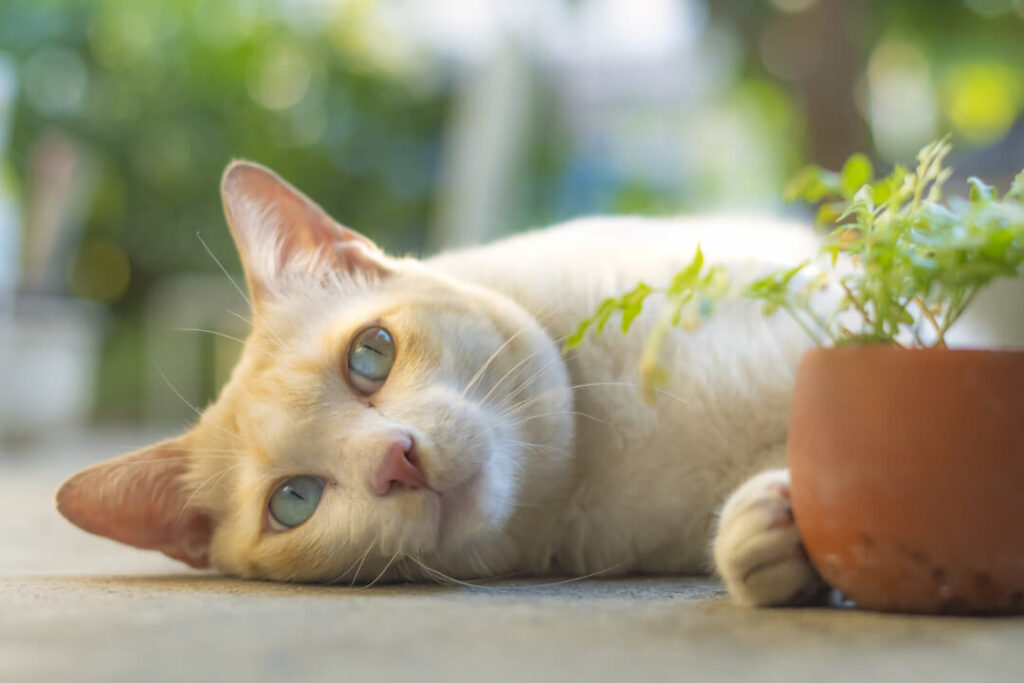
Are there dangers for outdoor cats?
Freedom has its price for outdoor cats. And sometimes a cat pays for it with its life. There are dangers lurking that aren’t part of an indoor cat’s environment: Run-ins and fights with other cats, animals, accidents and diseases. Unfortunately, some cats can also become victims of cat haters.
Roads and traffic
The greatest danger for outdoor adventurers comes from road traffic. Cats cover an amazing distance on their travels and even if they safely cross the street in front of home, it’s not guaranteed that they will keep away from main roads. Even older, experienced roamers sometimes misjudge things and get run over.
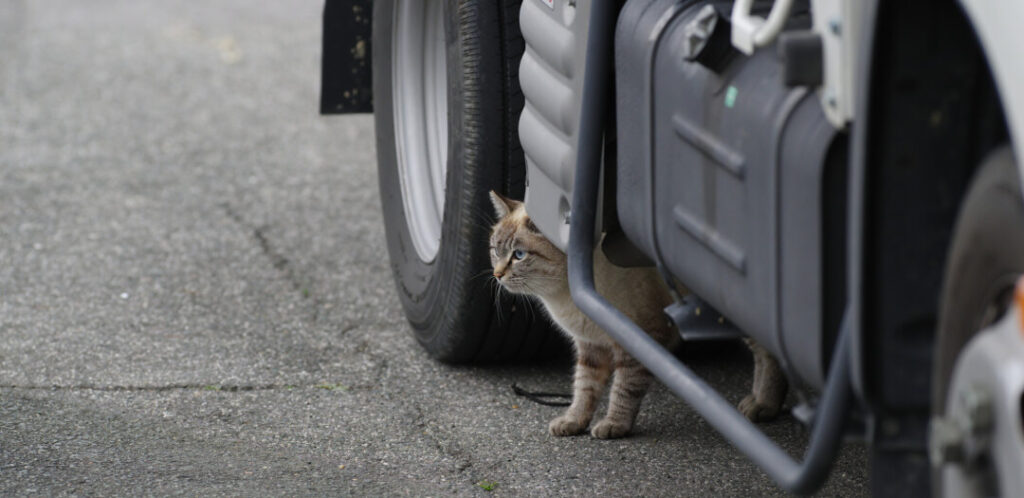
Woods, predators and poachers
In woods, hunters in some areas regularly shoot stray cats. Cats can also meet wild cats or other predators in the woods, not to mention two-legged poachers who flush out “predators” like cats to preserve other wild animals.
Lack of proximity to nature
Cats are hunters and it’s natural for them to indulge their hunting instinct in the wild. But even the most ambitious hunters will lose their fun of hunting if they have to live in the middle of the city, in a sterile concrete setting or next to a motorway access road. Animals to catch are quite rare here!
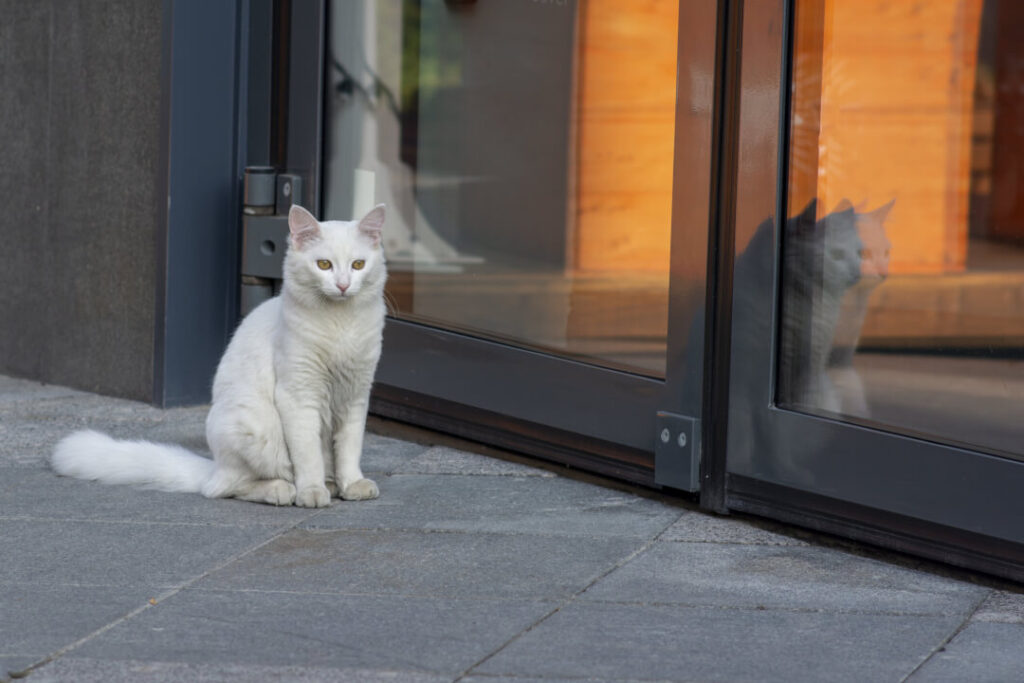
Other animals and pets
When roaming cats enter other areas, it can lead to territorial battles. Until the pecking order is established, it can get pretty rough –
and injuries can be sustained in the process. Your cat should learn to get on with other animals it may encounter. Otherwise it can become a big headache for everyone.
Once an outdoor cat, always an outdoor cat
You can try and make going outside appealing to an indoor cat, but you won’t be able to convert a confirmed fresh-air furry friend, and certainly not a stray that has been used to living outside since it was young. Although his new life has many advantages, for him it will seem like being locked up:
“Does the bird in the cage sing or cry?” Far Eastern saying from China
Outdoor or indoor cats: advantages and disadvantages
Both approaches – ‘free-range‘ or living in a confined area, i.e. indoors only – have certain advantages and disadvantages for your cat. What are the upsides and downsides of living free to roam?
Benefits
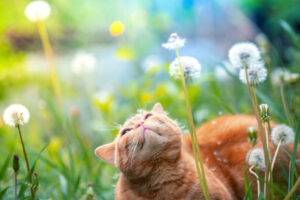
- Easier to urinate when the need calls
- Senses are sollicited and sharpened
- Relationships are cultivated and enhanced
- Physical fitness is increased
- Being active is good for wellbeing
But roaming has its disadvantages:
Downsides

- Harmful substances can be accidentally consumed
- Parasites can jump on board
- Diseases can be transmitted
- Injuries can be sustained in fights
- Road traffic can cause accidents
Tips for caring for indoor cats
Where else can you walk around on four paws without risk or danger lurking round the corner? Even in the country, our precious pusses are not 100% safe. Advocates for indoor-living cats claim that freedom isn’t required if a house cat lives inside in a way that suits its nature.
But what should you consider and know to care correctly for lounge lions?
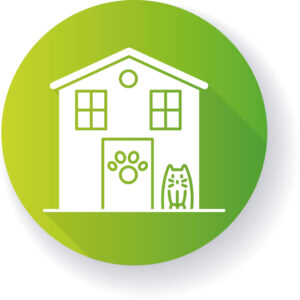
Making an outdoor cat into an indoor one doesn’t work
It’s easier for a camel to go through the eye of a needle than to get a free-roaming feline to voluntarily become an indoor cat. There are exceptions to this rule, but many cats that have only ever spent time outdoors don’t feel comfortable in a purely home- based setting. A compromise is giving them access to both – inside and outside.
Adapt your home accordingly
When a kitten arrives, you need to think about how you can make your home cat- friendly. What’s a cat’s favourite furniture?
Which accessories will make the home setting even better for an indoor puss? Can you have tasteful interior fittings with cats or does cat furniture have to be drab and fluffy?
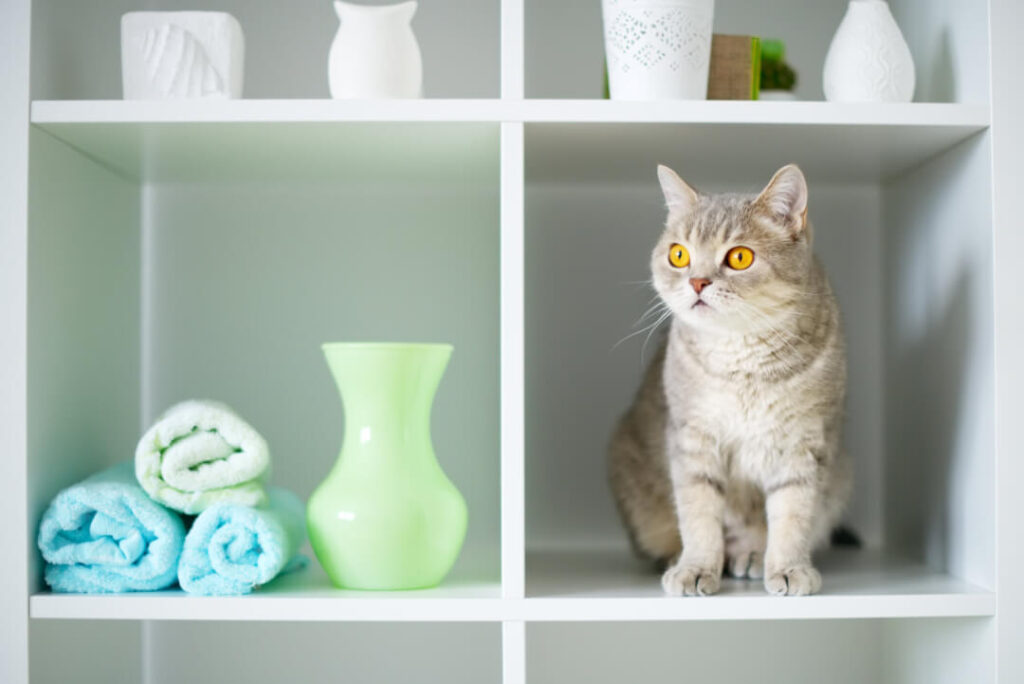
The right cat toys
Cat boredom? They can have a lot of fun in their living space!
With the right cat toys. And they don’t have to be expensive. You can even make them yourself! You don’t have to be a DIY expert. If you don’t have two left thumbs, you can do it yourself! How? Check out these great tips and tricks.
Provide enough stimulation for cats
Outdoor cats are exposed to many different sensory impressions every day: tastes, smells or sounds.
Indoor cats have to be content with a much more restricted and human habitat. But you can spice this up quite easily and naturally:
1. Decorate your home with natural materials: stone, clay, wood or plants such as seaweed or moss.
2. Indoor fountains are extremely popular with cats – preferably with balls that move in a water jet or fall. Special drinking fountains are available in pet shops just for cats.
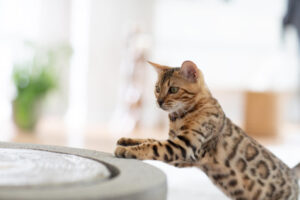
3. House plants for cats: create a green oasis for you and your cat. You can place pots or pans with plants that your cat will like. Best of all are grasses such as bamboo grass, sedge grass or Bowles’ golden grass. Blue fescue and beach grass are also suitable.
Even cats that have never been outdoors love the sounds of nature; these are probably stored in their subconscious. There is music with nature sounds that you can play. But at a low volume: cats usually don’t like loud, intrusive sounds:
Pay attention to home hygiene
Make sure that the litter tray is always clean and inviting:
- Empty the litter tray and dispose of its contents
- Clean the empty plastic tray with hot water and neutral detergent
- Then rub it dry with a towel or kitchen roll
- Put the dry litter tray in place and fill up with fresh cat litter

Can I let my indoor cat wander freely?
Should your flat cat be able to wander freely?
Some cats like to walk beside you like dogs on a leash.
A more self-sufficient solution is an extra door for the cat: a cat flap.
Open sesame! With a cat flap, you’re giving your feline housemate a spare key to open his/her own “cat door”:
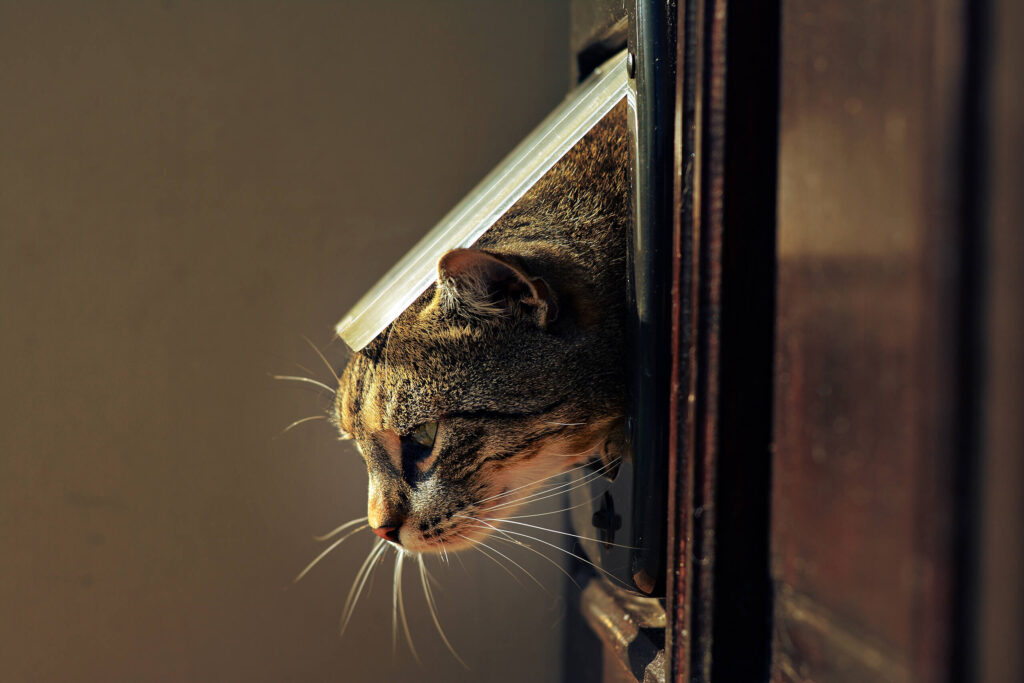
Provide enough stimulation for cats
Feeling ill and can’t take care of your furry friend?
Or have you an itch to travel – a holiday with or without your cat?
Most cats don’t like to move around, and prefer to be looked after in their familiar surroundings – preferably by people they already know and like. Then this will also be a much more relaxing time for your cat!

Cat housetraining
If a kitten learns from an early age what you don’t like, then you’ll live together in harmony from the beginning.
It’s also very difficult to train an adult cat to avoid “unappealing” habits – especially as cats are attached to routines and can be quite stubborn.
Tips for looking after outdoor cats
In the wild, no two days are the same. The world is one big adventure playground: its frisson of excitement is vital for hunters! The body is constantly on the move and the mind continually challenged. All this keeps cats healthy and active.
But there are also dangers lurking outside. What can make life on the move a bit safer?

Getting a cat chipped
A small chip implanted in your cat by a vet shows you where your soft-pawed prowler has got to. If your cat is lost or found, the chip’s code gives your details that can be traced to prove that the cat belongs to you!
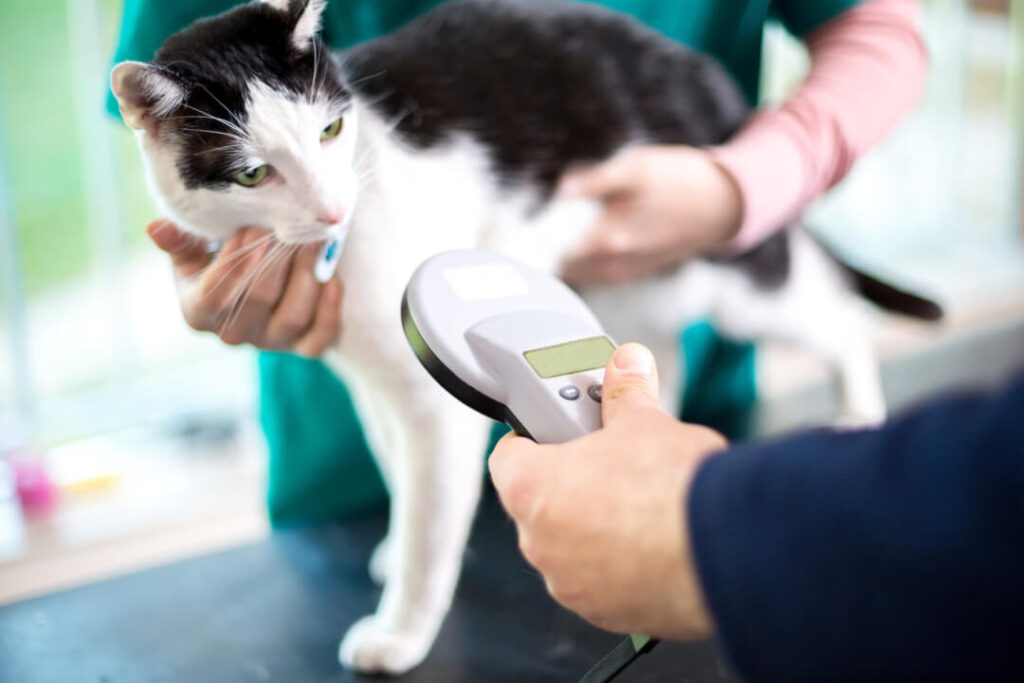
Vaccination, neutering etc.
Vaccinating against rabies, cat flu, cat diseases, feline leukemia, de-worming and protection against parasites are compulsory for outdoor cats. If they are free to roam, toms and females should also be neutered. It’s best to discuss this with your vet.
Cat collars
Is it sensible to get my cat a collar when they start to go out? After all, that way someone can see that this cat has a home and belongs to me! Some cats can’t find their way home wearing a collar because it causes them severe injuries or strangulation. So leave it off!
Correctly feeding outdoor cats
Free-range felines are generally active and always on the go, and thus need food that meets their need for more energy. Look for a high quality food that has plenty of nutrients. However, if your cat also eats somewhere else from time to time (neighbour, “open-door table”), you can easily reduce the portions.
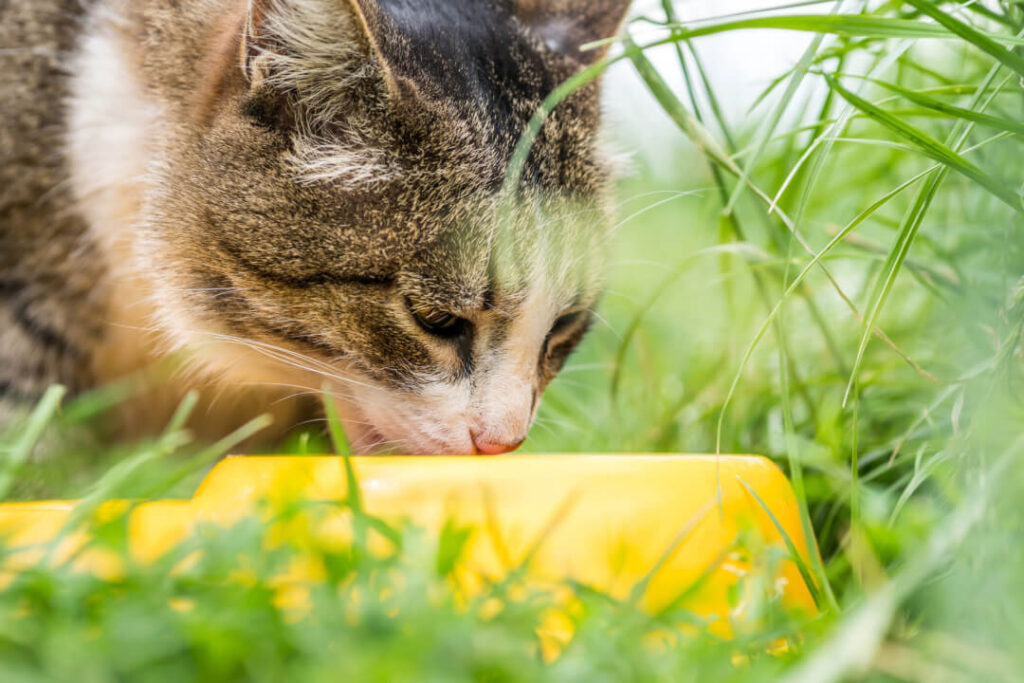
Outdoor cat toys
There are weatherproof outdoor toys. But let’s face it: what cat needs them? Outside is the full range of stimulation to satisfy any cat! Especially when it’s warm and there are birds chitter-chattering and creatures creeping and crawling everywhere…
Cat’s delight: what more could they want!
Watch out for neighbouring cats and pets
When cats on the loose meet, things can go haywire. Even an exchange of blows with strange pets can occur.
But usually if it only happens once, they then will avoid each other.
Unfortunately, this cannot be avoided completely, but the animals will sort it out among themselves.
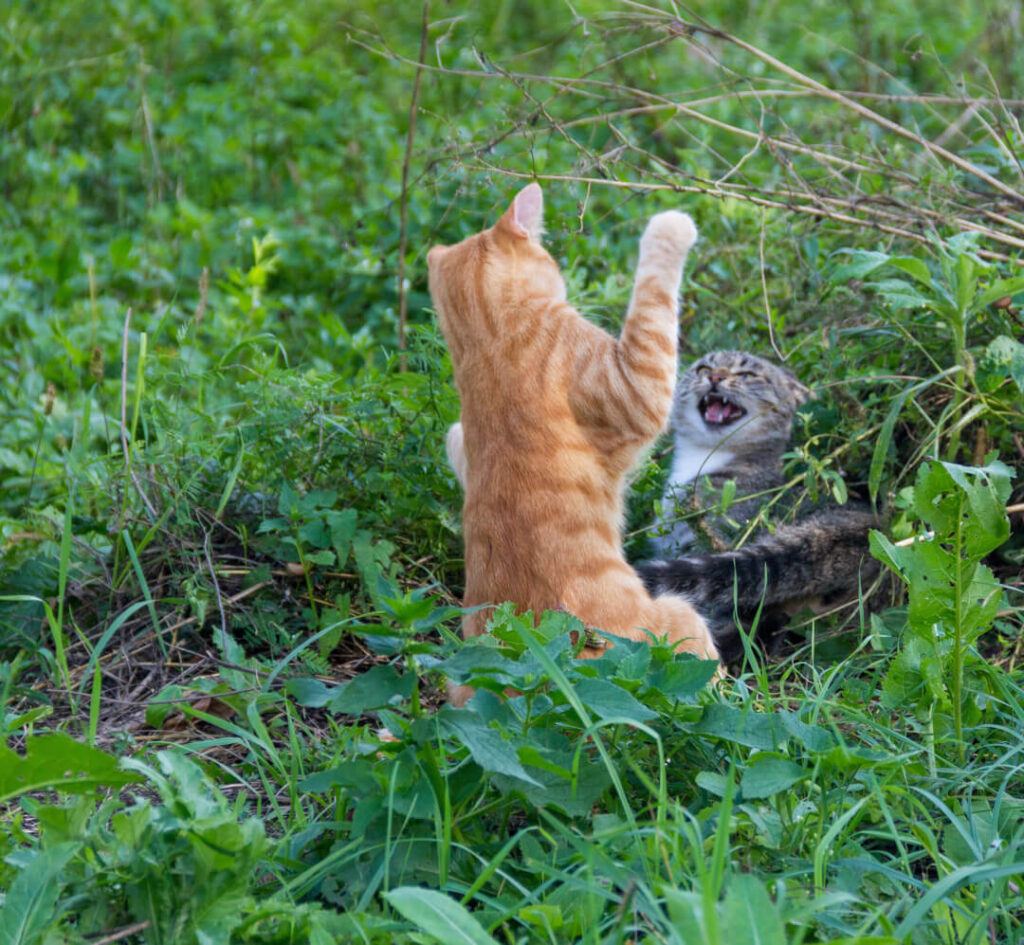
Cat flaps, cat ladders etc.
If you have a cat at home but don’t want to leave doors open all the time, it’s advisable to install a cat flap or a cat ladder.
To prevent other cats from coming into the house, there are also flaps with a chip that only allows access to your chipped cat.
Cats in winter
An outdoor cat can go out all year round – even in winter!
Provided your cat is used to being outside and has a winter coat. Hairless cats (Sphynx) and kittens are better to stay indoors.
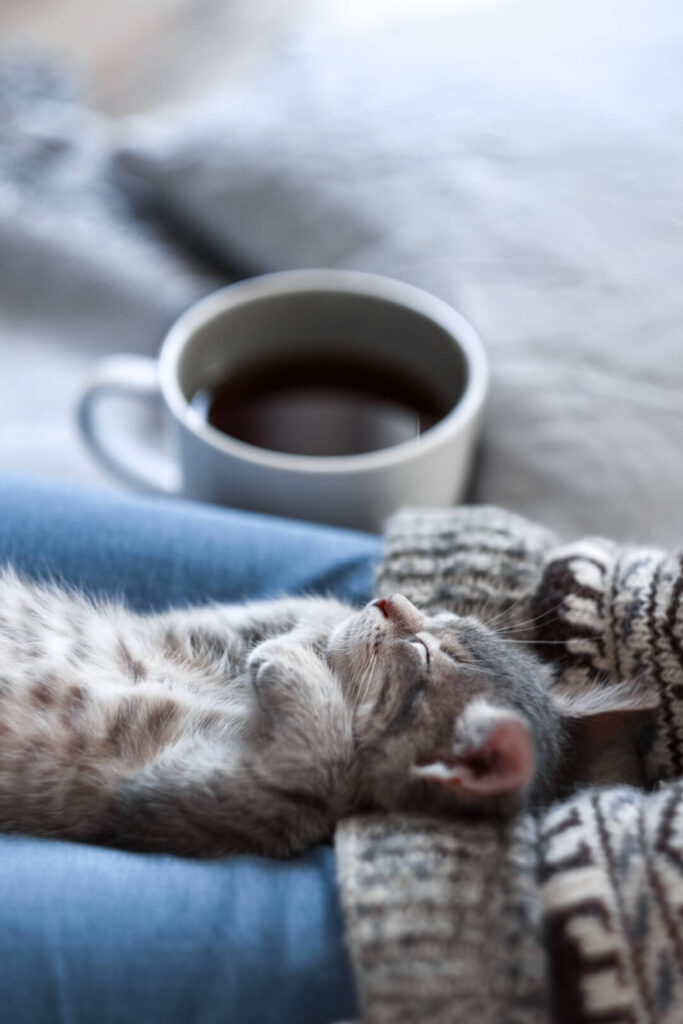
Make sure that your cat always has access to indoor and outdoor shelter during cold months. This could be in a garage, a shed or an old barn, where it is protected and isolated from the weather. Here you can create a cosy place for your furry friend, where it is always snug when it the weather is bad outside.
Can cats get too cold in winter?
Outdoor cats, which are outside all year round, adapt perfectly to the cold and warm seasons with a change of coat. When spring is approaching, cats shed fur for a thinner coat and in autumn grow a warm, thick winter coat. With its dense, insulating undercoat the winter coat keeps them dry and snugly warm – even in sub- zero temperatures.
Being wet is more dangerous than cold
If the undercoat gets very damp, it won’t insulate as well and a cat will be soaked to the skin. As she can’t quickly get rid of her ‘wet clothes’, you should help her to get dry again. A warm place by a stove or heater is just the ticket.
However, winter also presents our furry friends with a different challenge.
The ground is frozen! As hard as iron. How to dig for emergency needs…. ?
Make sure that your outdoor cat has a clean litter tray even in exterior shelters. S/he will have need of it more often now.


